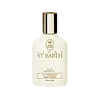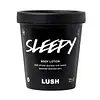What's inside
What's inside
 Key Ingredients
Key Ingredients

No key ingredients
 Benefits
Benefits

 Concerns
Concerns

 Ingredients Side-by-side
Ingredients Side-by-side

Dimethiconol
EmollientSodium Chloride
MaskingSodium Benzoate
MaskingGlycerin
HumectantIsohexadecane
EmollientMagnesium Sulfate
Paraffinum Liquidum
EmollientPolyglyceryl-2 Dipolyhydroxystearate
Skin ConditioningPolyglyceryl-3 Diisostearate
EmulsifyingDisteardimonium Hectorite
StabilisingCyclopentasiloxane
EmollientWater
Skin ConditioningBenzyl Benzoate
AntimicrobialCitronellol
PerfumingGeraniol
PerfumingLimonene
PerfumingLinalool
PerfumingPersea Gratissima Oil
Skin ConditioningHydrogenated Castor Oil
EmollientPentylene Glycol
Skin ConditioningPropylene Carbonate
SolventDimethiconol, Sodium Chloride, Sodium Benzoate, Glycerin, Isohexadecane, Magnesium Sulfate, Paraffinum Liquidum, Polyglyceryl-2 Dipolyhydroxystearate, Polyglyceryl-3 Diisostearate, Disteardimonium Hectorite, Cyclopentasiloxane, Water, Benzyl Benzoate, Citronellol, Geraniol, Limonene, Linalool, Persea Gratissima Oil, Hydrogenated Castor Oil, Pentylene Glycol, Propylene Carbonate
Avena Sativa Kernel Extract
AbrasiveMilk
Skin ConditioningPrunus Amygdalus Dulcis Oil
Skin ConditioningLavandula Angustifolia Flower Water
Skin ConditioningLavandula Angustifolia Flower
Skin ConditioningSimmondsia Chinensis Seed Oil
EmollientGlycerin
HumectantTheobroma Cacao Seed Butter
EmollientStearic Acid
CleansingIllipe Butter
Skin ConditioningTriethanolamine
BufferingLavandula Angustifolia Oil
MaskingStyrax Benzoin Gum
MaskingDipteryx Odorata Seed Extract
MaskingViola Odorata Oil
MaskingCetearyl Alcohol
EmollientBenzyl Benzoate
AntimicrobialBenzyl Cinnamate
PerfumingCoumarin
PerfumingGeraniol
PerfumingLimonene
PerfumingLinalool
PerfumingParfum
MaskingSynthetic Fluorphlogopite
Titanium Dioxide
Cosmetic ColorantTin Oxide
AbrasiveCI 45380
Cosmetic ColorantBlue 1 Lake
Cosmetic ColorantAvena Sativa Kernel Extract, Milk, Prunus Amygdalus Dulcis Oil, Lavandula Angustifolia Flower Water, Lavandula Angustifolia Flower, Simmondsia Chinensis Seed Oil, Glycerin, Theobroma Cacao Seed Butter, Stearic Acid, Illipe Butter, Triethanolamine, Lavandula Angustifolia Oil, Styrax Benzoin Gum, Dipteryx Odorata Seed Extract, Viola Odorata Oil, Cetearyl Alcohol, Benzyl Benzoate, Benzyl Cinnamate, Coumarin, Geraniol, Limonene, Linalool, Parfum, Synthetic Fluorphlogopite, Titanium Dioxide, Tin Oxide, CI 45380, Blue 1 Lake
Ingredients Explained
These ingredients are found in both products.
Ingredients higher up in an ingredient list are typically present in a larger amount.
Benzyl Benzoate is usually created from the condensation of benzoic acid and benzyl alcohol. It is used as a preservative, solvent, and has a floral/balsamic scent in large amounts.
As a preservative, Benzyl Benzoate works against bacteria and fungus. It is often used to treat scabies and lice in medicine.
Solvents are used to keep ingredients together in a product. They can help dissolve ingredients to stable bases or help evenly distribute ingredients throughout the product.
Due to its fragrance, Benzyl Benzoate can be sensitizing and may cause contact dermatitis. It is a known EU allergen. We recommend speaking with a professional if you have any concerns.
Benzyl Benzoate can be naturally found in cranberries and peaches.
Learn more about Benzyl BenzoateGeraniol is used to add fragrance/parfum to a product. It is the main component of citronellol. It is a monoterpenoid and an alcohol.
Monoterpenes are naturally found in many parts of different plants.
Geraniol can be found in many essential oils including Rose Oil and Citronella Oil. The scent of Geraniol is often described as "rose-like". Many foods also contain Geraniol for fruit flavoring.
Geraniol can irritate the skin when exposed to air. However, irritation depends on the ability of geraniol to penetrate into the skin. In general, geraniol is not able to penetrate skin easily.
Geraniol is colorless and has low water-solubility. However, it is soluble in common organic solvents.
Like citronellol, it is a natural insect repellent.
2,6-Octadien-1-ol, 3,7-dimethyl-, (2E)-
Learn more about GeraniolGlycerin is already naturally found in your skin. It helps moisturize and protect your skin.
A study from 2016 found glycerin to be more effective as a humectant than AHAs and hyaluronic acid.
As a humectant, it helps the skin stay hydrated by pulling moisture to your skin. The low molecular weight of glycerin allows it to pull moisture into the deeper layers of your skin.
Hydrated skin improves your skin barrier; Your skin barrier helps protect against irritants and bacteria.
Glycerin has also been found to have antimicrobial and antiviral properties. Due to these properties, glycerin is often used in wound and burn treatments.
In cosmetics, glycerin is usually derived from plants such as soybean or palm. However, it can also be sourced from animals, such as tallow or animal fat.
This ingredient is organic, colorless, odorless, and non-toxic.
Glycerin is the name for this ingredient in American English. British English uses Glycerol/Glycerine.
Learn more about GlycerinLimonene is a fragrance that adds scent and taste to a formulation.
It's found in the peel oil of citrus fruits and other plants such as lavender and eucalyptus. The scent of limonene is generally described as "sweet citrus".
Limonene acts as an antioxidant, meaning it helps neutralize free radicals.
When exposed to air, oxidized limonene may sensitize the skin. Because of this, limonene is often avoided by people with sensitive skin.
The term 'fragrance' is not regulated in many countries. In many cases, it is up to the brand to define this term. For instance, many brands choose to label themselves as "fragrance-free" because they are not using synthetic fragrances. However, their products may still contain ingredients such as essential oils that are considered a fragrance.
Learn more about LimoneneLinalool is a fragrance and helps add scent to products. It's derived from common plants such as cinnamon, mint, citrus, and lavender.
Like Limonene, this ingredient oxidizes when exposed to air. Oxidized linalool can cause allergies and skin sensitivity.
This ingredient has a scent that is floral, spicy tropical, and citrus-like.
Learn more about Linalool